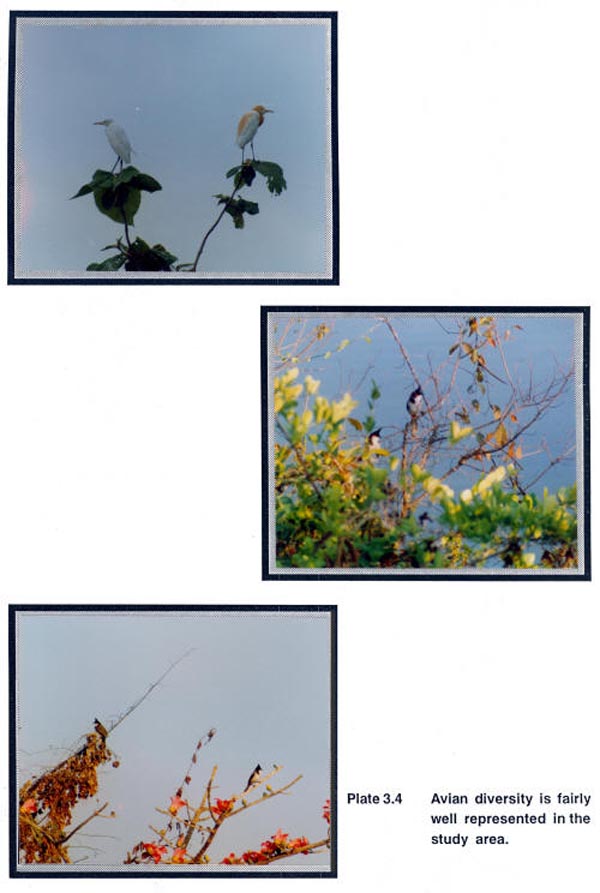Fauna of The Terrestrial Habitats
|
The RFs and PFs form the only terrestrial habitats in the study area. Nine species of mammalian fauna (Table 3.3) have been reported (secondary sources) from the study area. Table 3.3 List of mammals reported to occur in the study area.
(Based on secondary sources only) Species such as leopard, striped hyaena, wild pig, jackal, bonnet macaque and common langur were reported (secondary sources) from RFs of Bherse, Sagargad and Karle Khind. However during the detailed survey of the study area in the different seasons, the occurrence of all these mammalian species could not be confirmed. Their probable low densities could be responsible for no record of sightings of these animals in the study area. The species that were sighted during the survey included mongoose, macaques and common langur. In addition to the mammalian species, three species of snakes were recorded during the field surveys. These include the common Rat Snake (Ptyus mucosus), Common Cobra (Naja naja) and Checked Keel Back (Xenochorphis piscator). The entire study has fairly degraded forests due to heavy biotic pressures on account of cattle grazing, poaching and encroachment for cultivation. The forests in their present degraded status can not support large number of prey base. Low densities of mammalian species in these forests are therefore understandable. The only faunal group that was better represented in the study area was the avifauna (Plate 3.4). The terrestrial habitats in the RF and PF patches in the core zone of the study area even in their degraded form support few bird species. Table 3.4 provides the list of bird species in these habitats. Table 3.4 Bird species recorded in the Reserved and Protected Forests within the study area.
(The above checklist is based on the observations made doting June 1995, August 1995 and February 1996)
In all, 52 species of birds were recorded from all the three zones of the study area during pre-monsoon, monsoon and wither seasons. Most of the species were found to be fairly common in the entire area and non of the species recorded have been found to be listed as rare of endangered. The forests, predominantly comprised of young plantations of teak (Tectona grandis), in most of the part of the study area. Low plant species diversity in the plantation areas and poor ground cover in the degraded patches have been the two significant factors that have contributed in unusually low biological values of these forests. |
Last Updated: September 29, 2015










